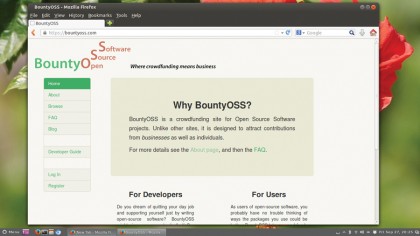The power of crowdfunding: how to make the most of it
Get funding with minimum hassle
James Carey says that your preparation also shows that you have already invested some of your own time and money on a project: "We didn't want to go to Kickstarter until we already had a solid prototype, based on around six months of work and the considerable investment of cash that that implies. If you aren't prepared to risk it for your project, why should your backers?"
One of the first things you should work on is your campaign pitch. Browse successful campaigns and check out why they are compelling. Most pitches are very personal and clearly specify who is behind the project and what problems they hope to solve with their project. They also tell backers how they can get involved.
"Pitches succeed if people judge they are going to succeed," says Carey. "Something that looks like it will get its money generally does. It's a perception game." A good engaging pitch introduces the campaign both in writing and in the form of a video. According to stats shared by Indiegogo on its blog, campaigns with pitch videos raise over double the amount of those without one. Also keep in mind that the average campaign video length for successful campaigns is roughly 3 minutes.
It's also imperative that you set an attainable goal. Don't just set an arbitrary figure. Do some serious number crunching and set a conservative goal that'll help you move your project forward and also fulfil the promised rewards. On Indiegogo, 87 per cent of campaigns that reach their goal exceed it by an average of 32 per cent.
While advising projects to have reasonable targets, Carey notes there seems to be a pattern: "An interesting rule of thumb, actually, is that successful Kickstarter projects get 150 per cent of their target, generally. This suggests that if your target is £60k, you should ask for £40k, and be more likely to get it all."
You should also carefully devise your rewards. Make the rewards unique enough to get people excited about them and want to tell their friends, while not breaking the bank. Again, it's best to learn from some of the successful campaigns of the past, many of which offer between five and eight rewards.
It's also best to have a wide range of rewards. Instead of unveiling them all at the same time you can update them during your campaign. Again it's best to browse campaigns and look for perks that have been claimed a lot.
Get daily insight, inspiration and deals in your inbox
Sign up for breaking news, reviews, opinion, top tech deals, and more.
John Nolan, who successfully funded the open source blogging platform Ghost, shares his recipe for success: "A compelling idea, value for money on rewards, and a clear indication that the project creator is able to deliver."
Foster a community

Once you've worked on these crucial elements also spend time working on your communication plan. Successful campaigners are proactive communicators throughout the life of their campaign and keep their investors engaged and excited. While some treat the crowdfunding platforms as a blog, most have 1 to 2 updates a week. They'll discuss updates, milestones and new rewards as they are unveiled.
James Carey believes that updates are key to the success of a campaign and adds "You've got to foster a good relationship with your backers by letting them know what you're up to behind the scenes. Crowdfunding is patronage, but there's a certain sense of ownership that comes with that patronage. You're in this together with your backers, let them know it."
Finally and most importantly, don't forget to hone your social media skills. What you are looking to achieve is a large number of small donations which are aggregated together to produce a significant sum. To do this you need to be able to reach and pitch your project to a large audience, and social media is the perfect tool for extending the reach of your campaign.
With almost two decades of writing and reporting on Linux, Mayank Sharma would like everyone to think he’s TechRadar Pro’s expert on the topic. Of course, he’s just as interested in other computing topics, particularly cybersecurity, cloud, containers, and coding.
